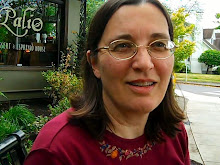Here is what I saw. On one of the quieter halls of the convention center was a small room set aside for private prayer. Since this was a Protestant gathering, the room contained no traditional religious art. Yet there was an icon, of sorts. Over on a low table was a framed portrait of President George W. Bush, with a candle in front of it. The meaning was clear -- pause here to pray specifically for our president.
So was this a Religious Right shrine?
Not that there's anything wrong with praying for George W. Bush or any elected official. They come up in our church prayer every day--liberal, conservative, Republican, Democrat, Libertarian, corrupt and honest, bland and controversial; the Orthodox Church in Japan prayed for the Emperor during World War II, and rightly so, because he needed it. As does, at this time, George W. Bush.
The problem is that the convention organizers have so little sense of liturgy and unverbalized meaning that they put a president's photo in the place of Christ in the chapel. It's not just the Restorationist Christians. A friend of mine attended her brother's church's Fourth of July Sunday service and got a celebration of All Saints of the USA--St. Thomas Jefferson, St. Benjamin Franklin, St. Thomas Paine. Well, no, they left off the saints part, but it's the same thing. My friend asks when they last celebrated the memories of the Church Fathers--St. Basil the Great, St. Athanasius, St. Gregory of Nanzianzen? The saints, actual saints, who distilled the core faith that anchors faithful Protestantism, Catholicism and Orthodoxy.
But, again, without a sense of liturgy, there is no sense of placement or proportion.
As a Protestant, I attended a Christian Church, one of those that belong to the nondenominational denomination whose convention Terry Mattingly attended, and in my last few weeks there, Mother's Day fell on Western Pentecost. The minister had been working his way through Ephesians for the preceding several weeks, so that day, he wrenched the text of Ephesians to make it fit with the theme of Mother's Day but never gave a glance to the birthday of the Church, extensively recorded in Scripture.
Soon after that, circumstances took me to visit my present Orthodox parish, and I later told the minister I was planning to become Orthodox. "Watch out," he cautioned me, with honest concern, "for those who put the traditions of man over those of God." Even now, more than a decade later, I kick myself for not asking the question that didn't quite fully form that day: "Of the two celebrations, Pentecost and Mother's Day, which is the tradition of God and which is the tradition of man?"
In that inability to distinguish lies the danger. Mattingly writes:
A few steps away was another door leading into a larger candle-lit room. This one contained a large prayer maze called 'The Desert.' It was based on Native American prayer traditions and, whether its creators intended it or not, is part of a larger movement with branches into all kinds of alternative forms of spirituality.
In their effort to avoid the divisions and customs of historic Christianity, they have replaced them with political activism and the tyranny of the trendy.
Lord have mercy.

No comments:
Post a Comment